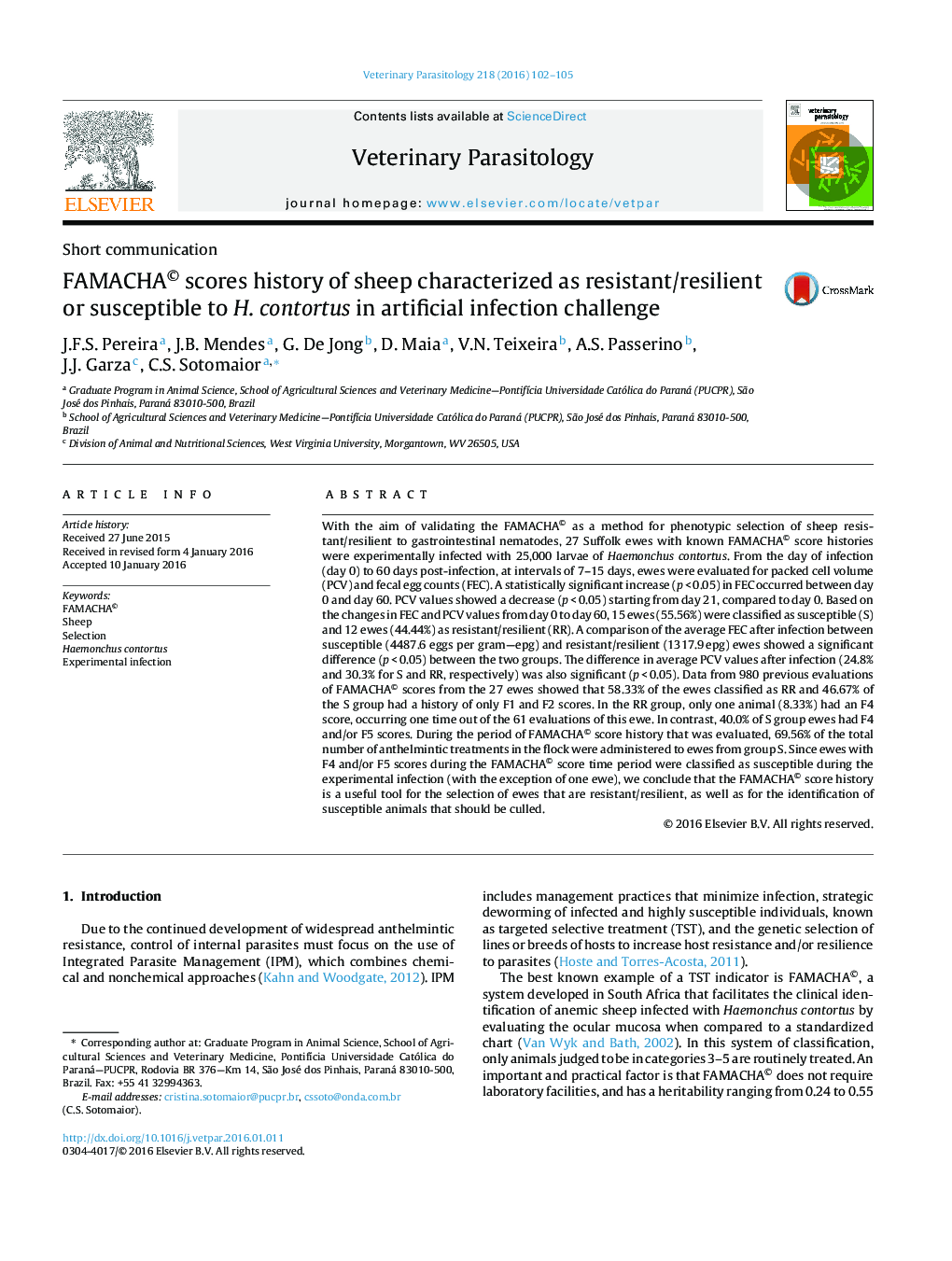| کد مقاله | کد نشریه | سال انتشار | مقاله انگلیسی | نسخه تمام متن |
|---|---|---|---|---|
| 2469901 | 1555658 | 2016 | 4 صفحه PDF | دانلود رایگان |
• Based on artificial infection ewes were classified as resistant or susceptible.
• Resistant/resilient ewes had lower FEC and higher PCV.
• Resistant/resilient ewes had only F1, F2 and F3 in their FAMACHA© history.
• Ewes that had F4 and/or F5 in their FAMACHA© history were classified as susceptible.
• FAMACHA© score history can identify susceptible ewes.
With the aim of validating the FAMACHA© as a method for phenotypic selection of sheep resistant/resilient to gastrointestinal nematodes, 27 Suffolk ewes with known FAMACHA© score histories were experimentally infected with 25,000 larvae of Haemonchus contortus. From the day of infection (day 0) to 60 days post-infection, at intervals of 7–15 days, ewes were evaluated for packed cell volume (PCV) and fecal egg counts (FEC). A statistically significant increase (p < 0.05) in FEC occurred between day 0 and day 60. PCV values showed a decrease (p < 0.05) starting from day 21, compared to day 0. Based on the changes in FEC and PCV values from day 0 to day 60, 15 ewes (55.56%) were classified as susceptible (S) and 12 ewes (44.44%) as resistant/resilient (RR). A comparison of the average FEC after infection between susceptible (4487.6 eggs per gram—epg) and resistant/resilient (1317.9 epg) ewes showed a significant difference (p < 0.05) between the two groups. The difference in average PCV values after infection (24.8% and 30.3% for S and RR, respectively) was also significant (p < 0.05). Data from 980 previous evaluations of FAMACHA© scores from the 27 ewes showed that 58.33% of the ewes classified as RR and 46.67% of the S group had a history of only F1 and F2 scores. In the RR group, only one animal (8.33%) had an F4 score, occurring one time out of the 61 evaluations of this ewe. In contrast, 40.0% of S group ewes had F4 and/or F5 scores. During the period of FAMACHA© score history that was evaluated, 69.56% of the total number of anthelmintic treatments in the flock were administered to ewes from group S. Since ewes with F4 and/or F5 scores during the FAMACHA© score time period were classified as susceptible during the experimental infection (with the exception of one ewe), we conclude that the FAMACHA© score history is a useful tool for the selection of ewes that are resistant/resilient, as well as for the identification of susceptible animals that should be culled.
Journal: Veterinary Parasitology - Volume 218, 15 March 2016, Pages 102–105
